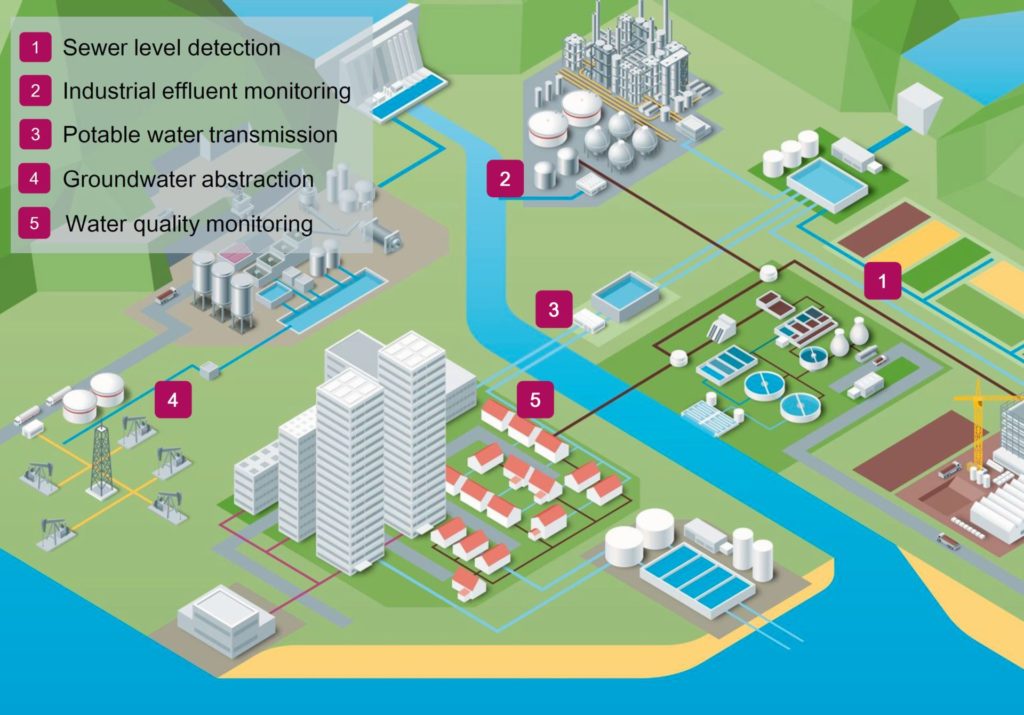Optimize your plant’s processes with Endress+Hauser technical support services
Ensure you are getting the most out of your instrument’s capabilities by talking with one of our technical support services […]
The water industry has undergone enormous changes in the past 20 years. Historically, it was normal to have a large team of operations staff to carry out time-consuming tasks like manual measurements to ensure plants and networks were running safely. Today, we are largely able to operate water treatment plants remotely, which is a boon to productivity, accuracy and efficiency.
IoT connects digital objects such as sensors and flowmeters to the internet, turning them into ‘smart’ assets that can communicate with users and application systems. One such tool is Endress+Hauser’s cloud-based monitoring system, Netilion Water Network Insights. This solution allows for more efficient process control and optimized network management, taking water monitoring operations that were previously manual and inefficient and automating them, providing continuous reporting on their own status in real time.
Planning and implementing large-scale IoT solutions is no simple task, but there are multiple ways that IoT can help the W/WW industry improve operational efficiency. The following are five of the most common use cases and areas where Netilion Water Network Insights can be utilized.

These parameters ensure that drinking water is safe or treated wastewater meets environmental guidelines. They are either measured online by process instrumentation or by manual grab sampling, which may examine a composite sample over a weekly period.
Online monitoring in the distribution network ensures that water quality is permanently measured. Real-time warning of pollution events is possible to ensure that they are quickly resolved, and downstream operations are not adversely affected. Furthermore, we can use online monitoring parameters as an input for network asset condition assessment — for example, pH and conductivity in wastewater pump stations. This can allow for further improvement to network operations.
IoT technology solutions like Netilion can provide enormous benefits that were not previously possible. Whether in densely populated or remote regions, Netilion Water Network Insights ensures full transparency in water networks around the clock. It can be used for reliable monitoring of water quantity, pressure, temperature, level or water quality. Netilion Water Network Insights connects all levels of a water supply system and offers service providers and water associations tailor-made solutions from a single source. These include everything from field devices, components for data transfer, data recording and data archiving to data evaluation as well as one-of-a-kind forecasting functions.
In these testing times of decreasing water security, IoT technology has been proven to boost operational efficiency and provide smart investment decisions. As utilities continue to make quantum leaps in their use of IoT technology, now is not the time to be left behind.
If you have questions about how the cloud-based Netilion software solution could be a good fit for your water applications, please reach out to our team!
Ensure you are getting the most out of your instrument’s capabilities by talking with one of our technical support services […]
Instruments are vital in process environments because their measurements directly impact product quality and operational safety. However, even the most […]
Endress+Hauser is always looking for new and creative ways to engage our customers. Direct feedback from our customers is crucial […]
Comments